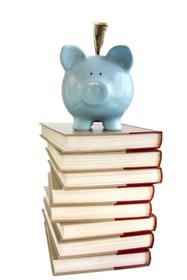For the 2025-26 school year, there are 4 public middle schools serving 132 students in Willow Lake School District 12-3. This district's average middle testing ranking is 6/10, which is in the top 50% of public middle schools in South Dakota.
Public Middle Schools in Willow Lake School District 12-3 have an average math proficiency score of 40% (versus the South Dakota public middle school average of 39%), and reading proficiency score of 53% (versus the 49% statewide average).
Minority enrollment is 4% of the student body (majority Hispanic), which is less than the South Dakota public middle school average of 42% (majority American Indian).
Overview
This School District
This State (SD)
# Schools
6 Schools
295 Schools
# Students
338 Students
40,126 Students
# Teachers
27 Teachers
2,993 Teachers
Student-Teacher Ratio
13:1
13:1
Student By Grade
District Rank
Willow Lake School District 12-3, which is ranked within the bottom 50% of all 146 school districts in South Dakota (based off of combined math and reading proficiency testing data) for the 2022-2023 school year.
The school district's graduation rate of 80% has increased from 50% over five school years.
Overall District Rank
#105 out of 148 school districts
(Bottom 50%)
(Bottom 50%)
Math Test Scores (% Proficient)
41%
42%
Reading/Language Arts Test Scores (% Proficient)
40-44%
51%
Science Test Scores (% Proficient)
20-24%
42%
Graduation Rate
(21-22)≥80%
82%
Students by Ethnicity:
Diversity Score
0.09
0.59
% American Indian
1%
26%
% Asian
n/a
1%
% Hispanic
2%
7%
% Black
1%
3%
% White
96%
58%
% Hawaiian
n/a
n/a
% Two or more races
n/a
5%
All Ethnic Groups
District Revenue and Spending
The revenue/student of $11,497 in this school district is less than the state median of $13,146. The school district revenue/student has declined by 13% over four school years.
The school district's spending/student of $10,657 is less than the state median of $12,647. The school district spending/student has declined by 13% over four school years.
Total Revenue
$4 MM
$1,916 MM
Spending
$4 MM
$1,844 MM
Revenue / Student
$11,497
$13,146
Spending / Student
$10,657
$12,647
Best Willow Lake School District 12-3 Public Middle Schools (2025-26)
School
(Math and Reading Proficiency)
(Math and Reading Proficiency)
Location
Quick Facts
Rank: #1 - 21. - 2.
Collins Colony Elementary - 06
(Math: <50% | Reading: <50%)
Rank:
Rank:
6/
Top 50%10
19606 Collins Ave.
Willow Lake, SD 57278
(605) 625-5945
Willow Lake, SD 57278
(605) 625-5945
Gr: K-8 | 16 students Student-teacher ratio: 16:1
Rank: #1 - 21. - 2.
Shamrock Colony Elementary - 05
(Math: <50% | Reading: <50%)
Rank:
Rank:
6/
Top 50%10
19087 413th Ave
Willow Lake, SD 57278
(605) 625-5945
Willow Lake, SD 57278
(605) 625-5945
Gr: K-8 | 21 students Student-teacher ratio: 11:1
Rank: #33.
Mayfield Colony Elementary - 04
(Math: <50% | Reading: 40-59%)
Rank:
Rank:
5/
Bottom 50%10
43188 Mayfield Rd
Willow Lake, SD 57278
(605) 625-5945
Willow Lake, SD 57278
(605) 625-5945
Gr: K-8 | 32 students Student-teacher ratio: 16:1
Rank: #44.
Willow Lake Middle School - 03
(Math: 30-39% | Reading: 50-59%)
Rank:
Rank:
5/
Bottom 50%10
400 Garfield Ave
Willow Lake, SD 57278
(605) 625-5945
Willow Lake, SD 57278
(605) 625-5945
Gr: 6-8 | 63 students Student-teacher ratio: 16:1 Minority enrollment: 8%
Recent Articles

How Public Schools Support Students on Free / Reduced-Lunch Programs
Explore how U.S. public schools support students eligible for free or reduced-price lunch through nutrition, academic, and wraparound services in 2025.

Hidden Costs of Public Schools: Fees, Supplies & Extras
Explore the hidden costs in public schools—fees, supplies, extracurriculars—and how parents can plan for them in 2025.

Public School Funding 2025: What Families Should Know
Essential insights on public school funding in 2025—how it works, what’s changing, and what families should know to stay ahead.





